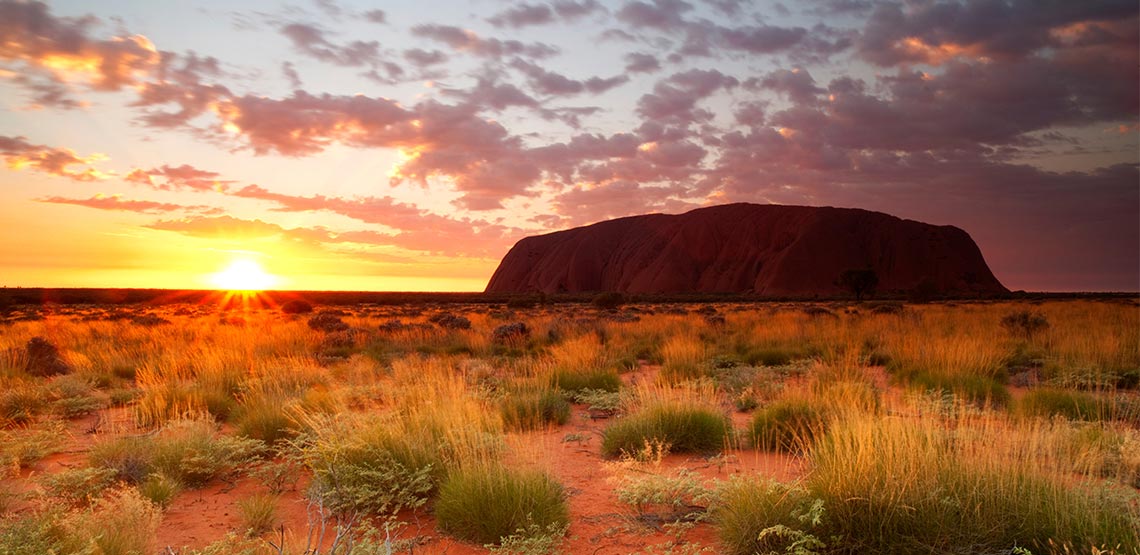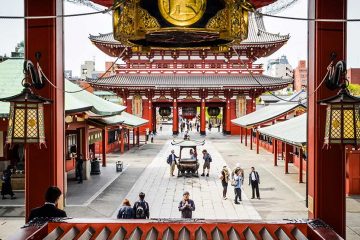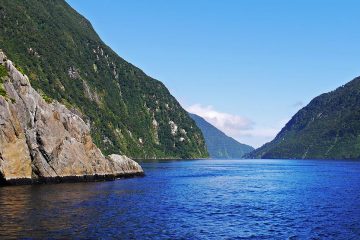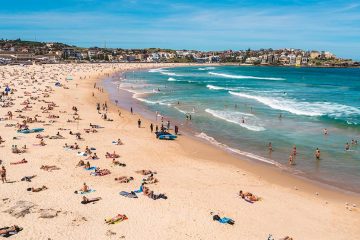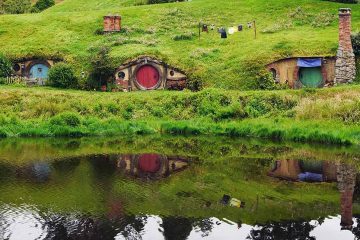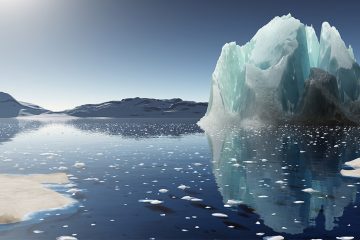Exploring All That Australia and New Zealand Have to Offer
Visiting the Homelands of Aussies and Kiwis
The antipodes are a fascinating and compelling area. Maybe it’s because Australia and New Zealand are so far away from the rest of the world, but these countries have a certain lure that draws visitors from all over the globe and seduces them completely.
If you want to find out for yourself what all the fuss is about, here is a complete guide to help you travel to Australia and New Zealand.
Why You Should Go
Australia and New Zealand combined have something to satisfy every wanderlust appetite. From adrenaline-fueled skydives over mind-boggling scenery, to carving your footprints into deserted beaches, to coming up close with some of the most bizarre animals on earth — there is an endless list of sights and things to do.
The area also makes for a great winter getaway for those living in the Northern Hemisphere since you’ll enjoy beautiful summer weather in Australia and New Zealand.
The region is also as easy to travel as foreign countries can be. Both countries are famous for their friendly inhabitants (who conveniently speak English), tourism infrastructure is all set up, and it is safe and secure for visitors.
The only problems you are likely to encounter are the sometimes bewildering accents, and the fact that you will never want to leave.
Highlights
Each country has unique highlights you shouldn’t miss. Here are just a few of the things you should include on your Australia/New Zealand itinerary.
Australia
- Uluru, for the red sandstone monolith that defies logic.
- Melbourne’s Laneways, for coffee, nightlife and street art.
- Whitsundays Islands, for some of the whitest beaches and densest rainforests.
- Sydney Opera House and Harbour Bridge, for iconic Australian architecture.
- Great Barrier Reef, for more than a thousand miles of coral and marine life, and some of the best diving on earth.
- Great Ocean Road, for a wild coastline peppered with lighthouses, kangaroos and surf spots.
New Zealand
- Rotorua, for bubbling hot pools and steaming geysers.
- Milford Sound, for the most beautiful scenery you will ever see.
- Waiheke Island, for vineyards and bush walks to the beach.
- Queenstown, for skiing, ziplining, horse trekking and everything adventurous.
- Hobbiton, because who doesn’t want to pretend to be a hobbit for the day?
- Fox Glacier, for glacier hiking, climbing and even parachuting.
- Waitomo, for the chance to see dazzling glowworms.
These stops are just the very beginning — you will have to work hard to keep your trip to less than a month. Ideally, you would need a minimum of two weeks in each country. In particular, a great way to travel is to see New Zealand by campervan, giving you far more flexibility in your travels.
The more time you have, the better.
Traveling Between the Two
Although many people often confuse the two countries, or even think they are part of the same landmass, Australia and New Zealand are a three-hour flight apart.
There are a number of airlines flying between the two countries, with the national carriers Air New Zealand and Qantas having the most frequent timetables and greatest number of destination options. On these airlines you can fly to and from cities such a Melbourne, Sydney, Brisbane, Auckland Wellington and Queenstown.
If you book at least two weeks in advance tickets are reasonably priced.
For budget airfares, Jetstar is your best bet, although bear in mind you won’t be served any refreshments during the three-hour trip unless you purchase them as extras, so bring snacks.
From ancient marvels to modern oddities, Tokyo is a city full of surprises. Be sure to check out these 12 things to do in Tokyo when you visit.
The Differences
Although often lumped into the same category, Australia and New Zealand are more like cousins than siblings. There are strong similarities, but there are also strong differences that might surprise you.
- Currency: The Australian dollar is a little stronger than the Kiwi dollar, so you might find Australia more expensive.
- Language: Both countries have distinct accents and their own set of slang words. Flip flops are known as thongs in Australia and jandals in New Zealand, for example.
- Safety: While Australia on the whole is a secure place to travel, you do have to be aware of things such as deadly snakes, spiders, crocodiles and even kangaroos — those things can kick. New Zealand has no dangerous animals of any kind, and no giant spiders. In that respect, you can worry a lot less about safety in New Zealand.
- Indigenous populations: One of the differences that will strike you most is how both nations treat their indigenous people. Maori culture is far more prominent in New Zealand — Maori is an official language and many place and animal names are still called by their Maori names. Maori traditions and culture are proudly promoted in tourist destinations. Aboriginal culture is not as widely recognized in Australia.
- Size: Australia is so vast it is actually a continent. It is many times larger than New Zealand in both land mass and population (23 million Australians versus 4.5 million New Zealanders).
- Climate: New Zealand has a temperate climate with warm summers and mild, wet winters. It rarely gets hotter than 90 degrees Fahrenheit in February, the hottest month. In the alpine areas of the South Island it can get as cold as 15 degrees Fahrenheit, but as most of the country is coastal, snow is rare in most places. Australia has a much more diverse climate as a result of its size. It is mostly desert or semi-arid, with tropical climates in the north.
- Time zones: Australia is divided into three time zones (AEST, ACST, AWST) so expect a change when traveling from Perth to Sydney. New Zealand is roughly two hours ahead of Sydney (AEST) and has only one time zone.
Key Things to Know
- Visas: Unless you are a New Zealand citizen, you will need a visa to enter Australia. Tourists must apply for a visa before leaving home. Travelers from the United States, Canada, Europe and many other countries do not require a visa to enter New Zealand — you will be given three months on arrival. However, you must have proof of a departing flight or you risk being turned away. Nationals from some countries will need to apply for a visitor’s visa. To be sure, it’s best to check with your nearest embassy or consulate.
- Customs and quarantine: Both countries prohibit visitors from bringing fresh food, feathers, eggs, seeds, skins and other animal products into the country. In New Zealand, expect to have your hiking boots cleaned if you have been walking in the countryside recently.

